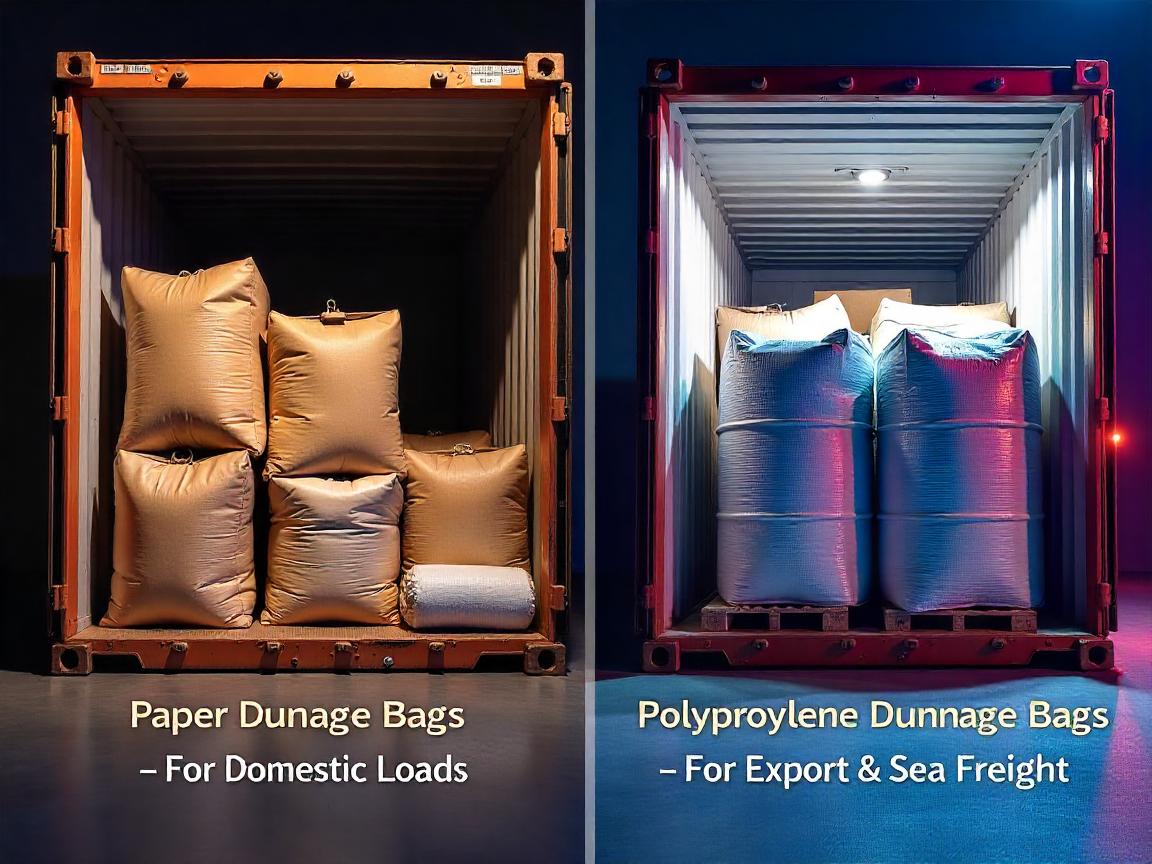When it comes to protecting cargo during transport, few solutions are as simple yet effective as dunnage bags. But here’s where it gets tricky—choosing the right dunnage bags can make or break your load stability. One of the most common questions we get asked is: What’s better—paper or polypropylene dunnage bags?
The truth is, both have their place in the world of freight, but understanding the key differences will help you make the best choice for your shipping needs. So, if you’ve ever stared at a catalogue or online listing and wondered which one to go with, this guide is for you.
Let’s break down how paper and polypropylene container air bags stack up, what they’re best used for, and why choosing the right dunnage bags matters more than you might think.
What Are Dunnage Bags?
Dunnage bags, also known as container air bags, are inflatable bags placed between cargo items in trucks, railcars, or shipping containers. Their purpose? To prevent load shifting, absorb impact, and secure goods tightly in place. They’re an essential part of shipping container restraints, especially when dealing with fragile or high-value cargo.
Inflated with a portable dunnage bag inflator, these bags expand to fill voids and apply uniform pressure across pallets and boxes. The result? A secure load that can travel thousands of kilometres without damage.
But here’s the catch: not all dunnage bags are created equal. That’s why choosing the right dunnage bags for your operation is so important.
Paper Dunnage Bags: The Traditional Choice
Paper dunnage bags are made with multiple layers of kraft paper on the outside and a polyethylene bladder inside. This blend of strength and flexibility makes them a popular choice for many industries.
Benefits of Paper Dunnage Bags:
- Eco-Friendly: Made mostly of recyclable materials.
- Cost-Effective: Usually less expensive upfront
- Strong Performance: Great for lighter to moderate loads.
- Easy Disposal: Can be recycled or discarded with general waste.
Paper dunnage bags are perfect for domestic shipping, particularly in trucks or rail where conditions are more predictable. If your goods aren’t at risk of moisture or sharp edges, these can be a solid solution when choosing the right dunnage bags.
Polypropylene Dunnage Bags: Built for Tough Jobs
If you need a bit more muscle, polypropylene dunnage bags (often referred to as polywoven bags) step in. These are made with woven polypropylene exteriors and a similar internal bladder for inflation.
Advantages of Polypropylene Dunnage Bags:
- Superior Strength: Handles higher PSI and load pressure.
- Moisture Resistance: Ideal for international shipping and humid environments.
- Reusable: Can often be used multiple times.
- Abrasion-Resistant: Won’t tear easily if rubbing against rough surfaces.
For export shipments or anything travelling via sea freight, polypropylene container air bags are your best bet. If you’re choosing the right dunnage bags for heavy machinery, metal goods, or awkwardly shaped items, polywoven bags give you the edge.
Key Differences at a Glance
| Feature | Paper Dunnage Bags | Polypropylene Dunnage Bags |
| Strength | Moderate | High |
| Moisture Resistance | Low | High |
| Reusability | Generally single-use | Often reusable |
| Eco-Friendliness | High (recyclable) | Moderate |
| Best for | Domestic loads | Export/sea freight, heavy loads |
| Inflation Method | Portable inflator | Portable inflator |
If you’re ever unsure while choosing the right dunnage bags, this side-by-side view can serve as a quick reference to help you decide.
The Role of Inflation Tools
Whichever type you go with, don’t overlook the importance of using the proper inflation tool. A portable dunnage bag inflator ensures each bag is filled to the right pressure level for maximum performance.
Overinflation can lead to bursting; underinflation leads to shifting cargo. With the right tool, your dunnage air bag works exactly as intended—no guesswork, no delays.
When to Use Each Type
Still not sure about choosing the right dunnage bags? Here are a few scenarios to help you decide:
- Exporting electronics via ocean freight? Polypropylene wins.
- Sending lightweight goods on a local delivery run? Paper is perfect.
- Worried about condensation inside containers? Go with polywoven.
- Want the greenest option possible? Choose paper and recycle after use.
- Need a solution that can handle being reused? Polypropylene’s durability pays off.
Remember, the environment your shipment travels through should play a major role in choosing the right dunnage bags.
Final Thoughts: Don’t Leave It to Chance
It’s easy to underestimate the role dunnage plays—until something goes wrong. Damaged goods, unhappy clients, and financial losses are all avoidable with the right protective measures.
Whether you opt for paper or polypropylene, the key is choosing the right dunnage bags for your cargo type, route, and handling conditions. With the right combination of quality bags and a reliable portable dunnage bag inflator, you’re protecting your freight, your reputation, and your bottom line.









